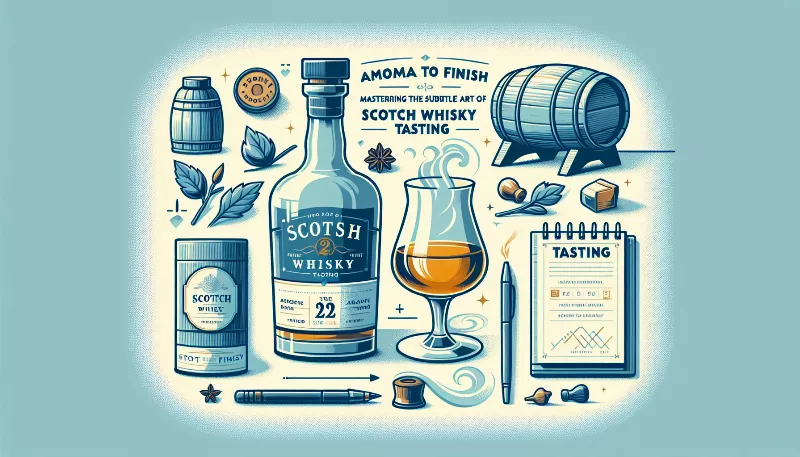Decades in the Making: The Impact of Long-Term Aging on Scotch Whisky
Explore how time transforms Scotch whisky into a masterpiece. Discover the secrets of long-term aging and its profound impact on flavor and quality.

Decades in the Making: The Impact of Long-Term Aging on Scotch Whisky
Imagine a spirit so refined that its very essence is shaped by the passage of time. Scotch whisky, a beverage revered around the globe, is not just crafted; it is cradled through decades, maturing into a complex symphony of flavors and aromas that can only be achieved through long-term aging. The journey from a clear, new make spirit to a rich, amber-hued whisky is one of patience, expertise, and tradition. Let's delve into the wondrous world of aged Scotch whisky and discover how time weaves its magic to transform this liquid gold.
The Alchemy of Aging
Long-term aging is the alchemist's secret to unlocking the full potential of Scotch whisky. As the whisky slumbers in its cask, a series of chemical reactions takes place, each influenced by the type of wood, the environment of the warehouse, and the duration of aging. Over time, the interaction between the wood and the spirit imparts distinctive flavors such as vanilla, caramel, and spice, which are hallmarks of a well-aged Scotch. The longer the whisky matures, the deeper and more intricate these flavors become, creating a tapestry of taste that is utterly mesmerizing.
The Role of the Cask
The choice of cask plays a pivotal role in the aging process. Whether it's American oak, European oak, or even casks that previously held sherry, port, or wine, each imparts unique characteristics to the whisky. The wood's porosity allows for subtle oxidation, mellowing the spirit and rounding out any harsh edges. As the years roll by, the whisky also draws color from the wood, gaining a rich hue that is as pleasing to the eye as it is to the palate.
Patience Pays Off
Patience is indeed a virtue when it comes to aging Scotch whisky. While younger whiskies have their own vibrant appeal, it is the older expressions that truly showcase the artistry of the distiller and the blender. With each passing year, the whisky evolves, developing layers of complexity that can only emerge over time. A 30-year-old Scotch, for example, offers a depth of character that is simply unattainable in a younger counterpart. It's a testament to the belief that the best things in life are worth waiting for.
The Influence of Time and Place
Time and place are inextricably linked in the maturation of Scotch whisky. The climate of Scotland, with its cool temperatures and high humidity, provides the ideal conditions for aging. The location of the warehouse, whether it's nestled in the Highlands or perched by the sea, also contributes to the whisky's final profile, with maritime warehouses imparting a subtle salinity that whispers of the ocean's proximity.
A Sip Through Time
Tasting a long-aged Scotch whisky is like taking a sip through time. Each drop tells a story of its journey, from the selection of the grain to the quiet decades spent in the cask. It's an experience that connects the drinker to the distillery's history and the generations of craftsmen who have dedicated their lives to perfecting this liquid legacy. As you savor the rich tapestry of flavors, you're not just enjoying a drink; you're partaking in a tradition that has been honed over centuries.
Conclusion: The Timeless Allure of Aged Scotch Whisky
In conclusion, the impact of long-term aging on Scotch whisky cannot be overstated. It is a transformative process that elevates the spirit to extraordinary heights, creating a sensory experience that is both timeless and ephemeral. For connoisseurs and casual drinkers alike, the allure of a well-aged Scotch is undeniable—a reminder that some things in life improve immeasurably with age. So, here's to the slow, beautiful journey of Scotch whisky, a journey that reminds us that the finest pleasures are those that unfold over time.










